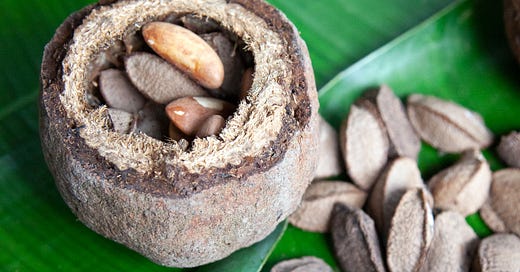The primary dispersal of Bertholletia excelsa, best known as the Brazil Nut, is through forest rodents, like the agouti. The large fruits, which can weigh as much as 2 kilos each, are broken open by these animals to reveal the roughly twenty nuts inside. Some are eaten, while others…
Keep reading with a 7-day free trial
Subscribe to New Worlder to keep reading this post and get 7 days of free access to the full post archives.




